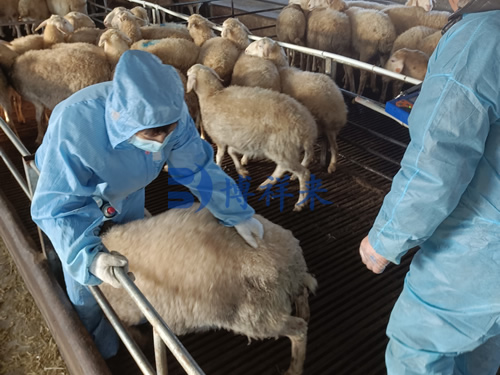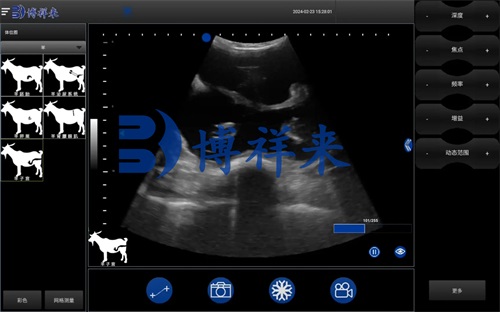Ultrasonic instruments are becoming increasingly important in modern sheep management. These tools provide farmers and veterinarians with a non-invasive way to monitor and assess the health of their flock, leading to better decision-making and improved management of sheep. By offering detailed insights into various physiological aspects of the animals, ultrasound helps to optimize breeding programs, improve flock health, and ensure higher productivity. Below, we will explore the key measurements and assessments that ultrasonic instruments provide for sheep management.
Pregnancy Diagnosis
One of the most common uses of ultrasound in sheep farming is pregnancy diagnosis. It allows veterinarians to accurately determine whether a ewe is pregnant and, if so, how many fetuses she is carrying. This information is crucial for managing breeding schedules and anticipating lambing. The ability to detect pregnancy early in the gestation period helps farmers plan for resources and care, as well as monitor the ewe's health more effectively. Ultrasound can also identify if there are any complications, such as multiple fetuses or abnormalities.

Fetal Health Assessment
Ultrasonic technology is also used to assess the health of fetuses within the ewe. By evaluating the fetus' development, veterinarians can detect any potential problems at an early stage, such as developmental delays or abnormalities. This early detection is critical, as it enables farmers to take preventive measures, potentially saving the lives of both the ewe and her lambs. Ultrasound can also be used to monitor the condition of the placenta, which plays an essential role in the fetus' health.
Reproductive Health
Ultrasound is an essential tool for evaluating the reproductive health of ewes. Regular ultrasound scans can help detect issues such as ovarian cysts, uterine infections, or other conditions that could affect fertility. These conditions might not show obvious external symptoms, making ultrasound an invaluable diagnostic tool. By identifying these health issues early, veterinarians can intervene and treat the ewe before these problems affect her reproductive capabilities. In turn, this enhances the overall fertility rates in the flock.
Body Condition Scoring
Some advanced ultrasonic devices can also measure fat thickness and muscle depth in sheep, providing valuable information about their body condition. This is particularly important for evaluating the nutritional status and overall health of sheep, as both underweight and overweight animals can face health challenges. By regularly assessing body condition scores through ultrasound, farmers can ensure that their flock maintains optimal health, which leads to improved productivity and fewer health issues.

Internal Organ Evaluation
Ultrasonic instruments are capable of visualizing the internal organs of sheep, such as the liver and kidneys. These organs play a significant role in the overall health of the animal, and their function can be affected by various diseases or conditions. By performing regular ultrasound evaluations, veterinarians can detect early signs of disease, enabling them to intervene before the condition becomes more serious. Early intervention can significantly improve the chances of recovery and help maintain the health of the flock.
Lameness Assessment
Lameness in sheep is often caused by injuries or diseases affecting the legs and hooves. Ultrasound is used to examine the soft tissues, tendons, and ligaments of the legs to diagnose issues related to lameness. With ultrasound, veterinarians can identify strains, tears, or other damage to the connective tissues that may not be visible on the surface. This allows for more accurate diagnosis and better treatment options, helping to reduce lameness and its impact on the flock's overall productivity.
Conclusion
In summary, ultrasonic instruments are an essential part of modern sheep management. They provide crucial insights into pregnancy, fetal health, reproductive health, body condition, internal organ function, and lameness, enabling farmers and veterinarians to make better-informed decisions. By incorporating ultrasound into sheep management practices, farmers can improve the health and productivity of their flock, optimize breeding programs, and reduce the incidence of disease and injury. For companies that manufacture large animal ultrasound devices, such as BXL, these advancements in technology offer farmers valuable tools to improve their operations and ensure the long-term success of their farming businesses.
tags: ultrasonic instrument measure for sheep
Text link:https://www.bxlultrasound.com/slt/401.html


